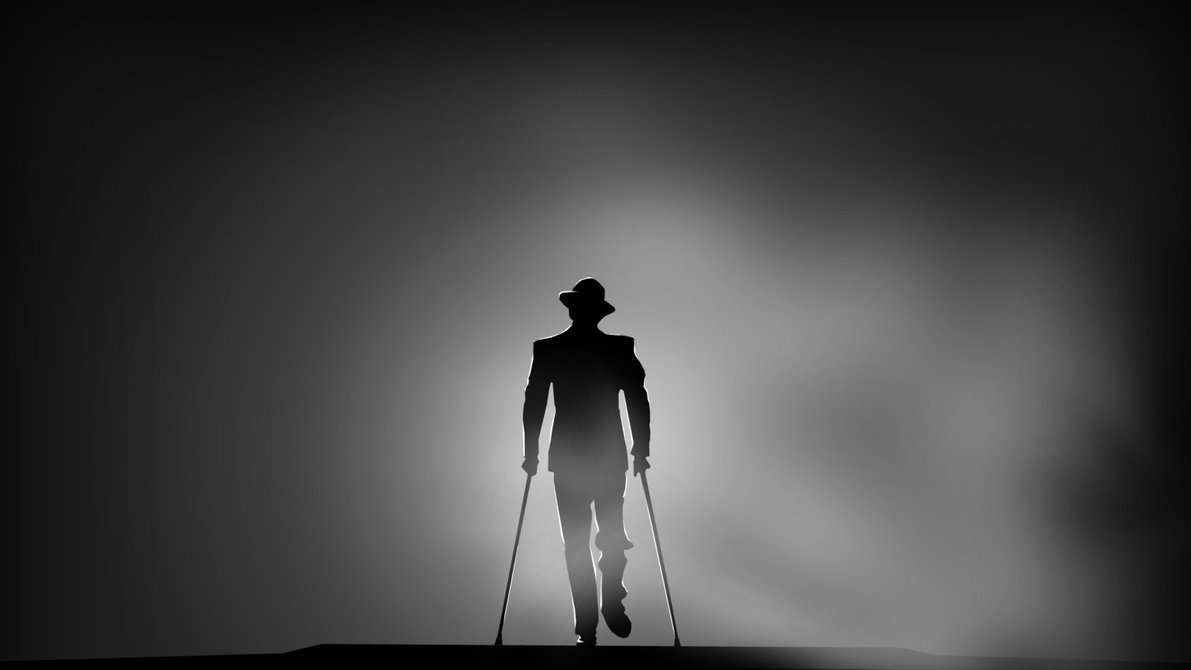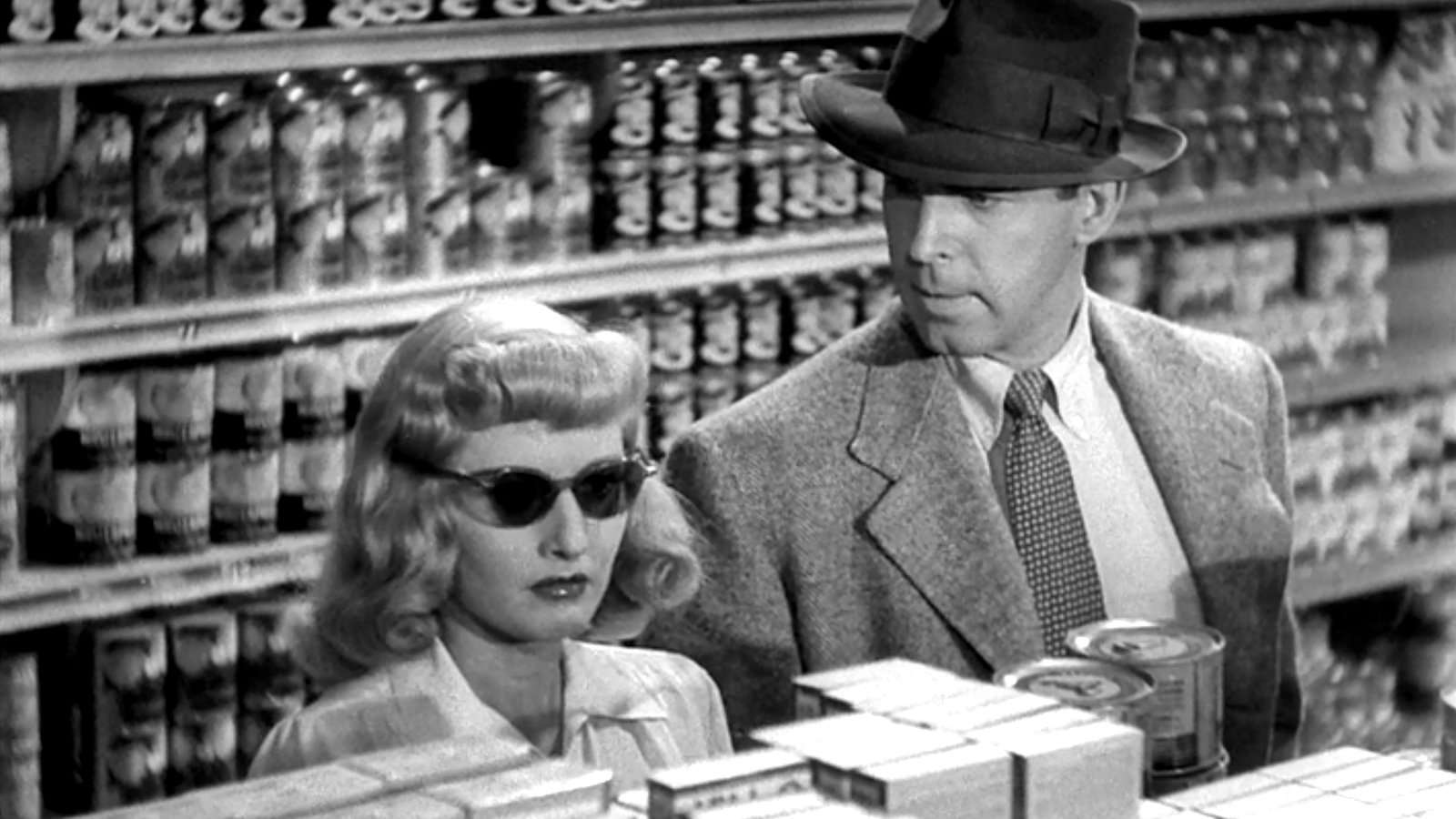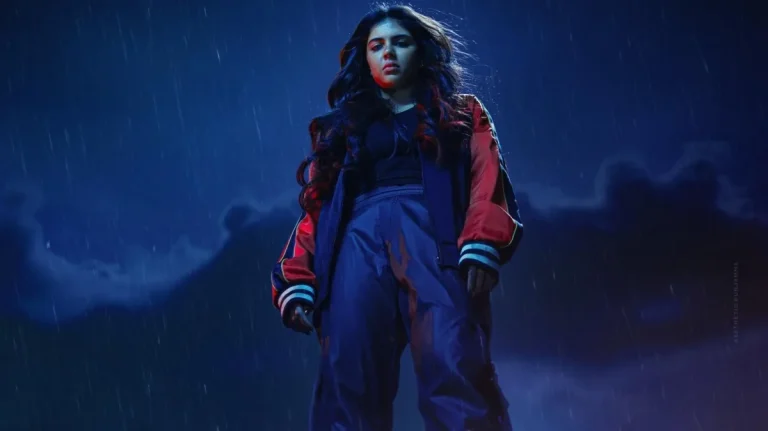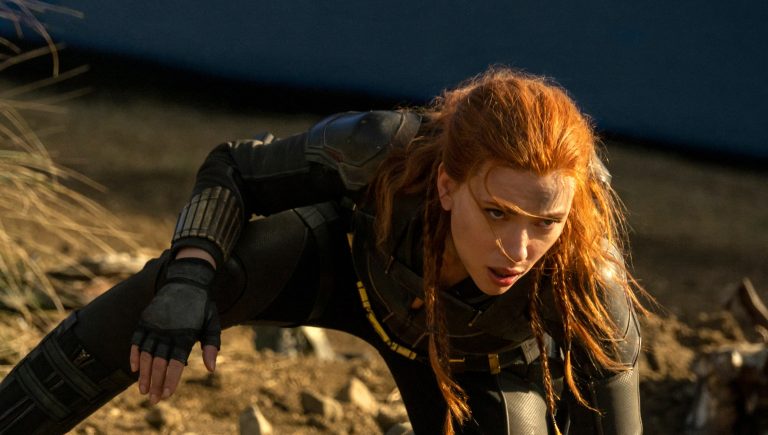The femme fatale character type is as old as the tale about the first man and woman, Adam and Eve, wherein Adam ate the forbidden fruit Eve served, thereby dooming humankind to death and original sin. But in the context of pulp fiction and noir films, this character murders for her selfish needs, often by manipulating the lead, but is not afraid to take matters into their own hands if needed.
Portraying a psychopath is challenging, as most people have not had the displeasure of meeting one in person, so the mysterious elements of psychopathic behaviour are filled by imagination. Few artists from Hollywood’s Golden Age took a stab at playing the femme fatale, but no one was as legendary as Barbara Stanwyck in “Double Indemnity.” As Phyllis Dietrichson, Stanwyck achieves her legendary status because of the realism in her performance. It’s minimalism that sticks out at a time when performances were usually flashy and theatrical. The portrayal is stark, with its dead stare and rarely blinking eyes.
At the time, Stanwyck was the most successful actress and the highest-paid woman actor in America! Known for her dramatic roles and her lovely dark hair, she was hesitant to play the murderous Phyllis as it would have harmed her reputation and her thriving career, but succumbed to the director, Billy Wilder’s, insistence. Wilder recommended she wear a wig to instill the idea that everything about Phyllis’ personality is fake, along with subverting the image of the irrational blonde. Stanwyck donned a blonde wig and created the iconic blonde femme fatale.
The first time Phyllis appears in the film, she is draped in a towel, teasing Fred MacMurray’s Walter Ness from above the stairs, when he comes over to her house to sell her husband automobile insurance. Walter gleefully figures her as being promiscuous, but could not have imagined that she plans to murder her husband. In Ness’ narration of the story, we see that he is smart, but his opinions are clouded by the haze of his attraction towards her. As he rattles his insurance spiel, he is stuck on her perfume and the anklet on her foot while she silently plots murder.

When it dawns on Walter that Phyllis plans to kill and use him as a shoulder to rest her gun on, he feels insulted at first. His attempt to set her straight is not well-received, and Phyllis’ true personality emerges as she hisses, ‘I think you’re rotten.’ In her effort to express her reasons for wishing her husband dead, she strings lie upon lie, creating a garland that ultimately becomes the noose on Walter’s neck.
Walter falls for her play because he wants to. In his business, he has often thought of ways to pull a fast one on his employer. Everyone can use more money than they have. That’s just the way it is. Only no one goes through committing murder because they either think it’s wrong or they don’t have the stomach for it. But Walter’s own smartness gets the better of him.
More Related to Billy Wilder’s ‘Double Indemnity’: The Representation of Women in Film Noir
It is a thing of beauty to see Stanwyck sitting and playing a game with her stepdaughter, as Walter sets his plan to get accident insurance for Mr. Dietrichson without his knowledge. She is in the room in case Walter needs help, giving a different performance for each person in that room with an unfathomable ease. When the stepdaughter leaves, Stanwyck gracefully sets herself on the couch, sitting across from both men, watching. Phyllis’ real self is rarely shown in the movie. It takes multiple viewings to realise the magnificence of Stanwyck’s portrayal. The most shocking moment of the film is also the most revealing of Phyllis’ psyche as she is driving while her boyfriend kills her husband, sitting right next to him. The utter lack of emotion on her face is bone-chilling.
On the night of the murder, while Phyllis is relaxed, we can feel the sweat under Walter’s armpits. On the drive back after dumping Mr. Dietrichson’s body, Walter and Phyllis don’t speak at all. But Phyllis shrewdly senses that the murder has taken a toll on Walter. She reaffirms that they’re in it together straight down the line, saying the customary, ‘I love you’, emotionlessly. She is testing Walter, indicating to him to be cool and be with her.
As Keyes (Edward G. Robinson), the claims investigator and Walter’s friend, inches closer to identifying Phyllis for who she is, and possibly him as the killer, Walter meets her and tells her that she should not make the insurance claim, before it is too late to turn back. In this scene, when Phyllis has used everything from her bag of tricks, her true self makes an appearance again as she threatens to expose Walter (since the plan was his, after all) and reminds him of it by saying, ‘We went in this together and we are coming out at the end together. It’s straight down the line for both of us. Remember?’

Phyllis’s true designs and aptitude for murder come to light less in her own words and more from Lola, her step-daughter. She reveals that Phyllis was Dietrichson’s first wife’s nurse and had a hand in killing her. Then, she is attempting to replace Walter with another chump called Nino. Like a virus, she spreads, infecting one man after another for her own gains. When Phyllis is shown next, the audience’s perspective on her has changed dramatically, and the calmness on her face makes her icier.
With all the cards on the table and nowhere left to go but down, Phyllis and Walter meet one last time, each ready to kill the other. This is where the character surprises not only the audience but also herself. She is unable to fire the kill shot on Walter, adding another layer to her brilliant performance. Throughout the movie, she is playing a manipulative woman scheming and committing murder with calm nerves, but also a woman who is unwittingly discovering some form of affection.
The writing helps the performance immensely as the dialogues written for all the male characters are witty and rapid-fire, but her’s seem more natural and plain. One of the greatest writing teams Hollywood has ever created, Chandler and Wilder work together to make a word-perfect script. It has more jokes than most comedies, but turns vicious in the blink of an eye.
“Double Indemnity” was a sensational hit when it was released, and since has only grown in reputation. It defined the blueprint for future noir films, setting a high bar for them that’s rarely matched. Following Stanwyck’s turn as Phyllis, the femme fatale was represented through seduction, then false emotion for further manipulation, and finally, the cold lack of empathy or remorse. The clothes, accent, and language may have changed over the years, but the femme fatale of cinema stands on these three pillars. And to this day, she amazes as well as ignites the fantasies of the audience.








